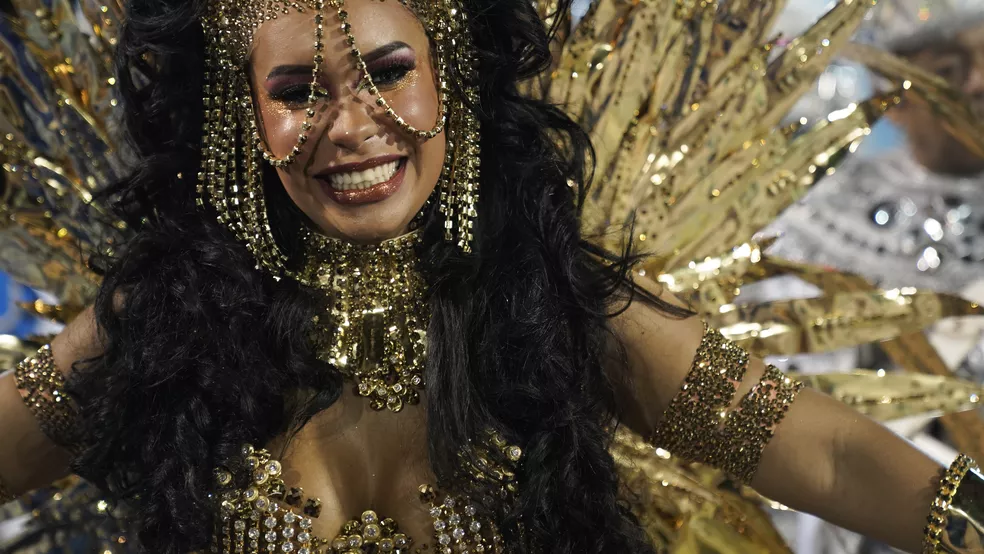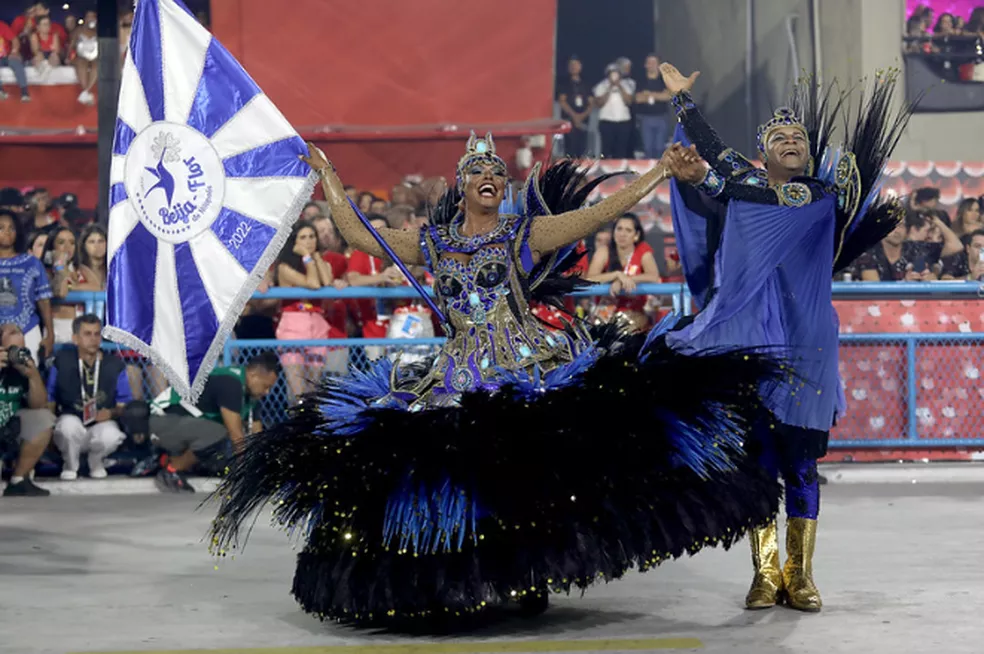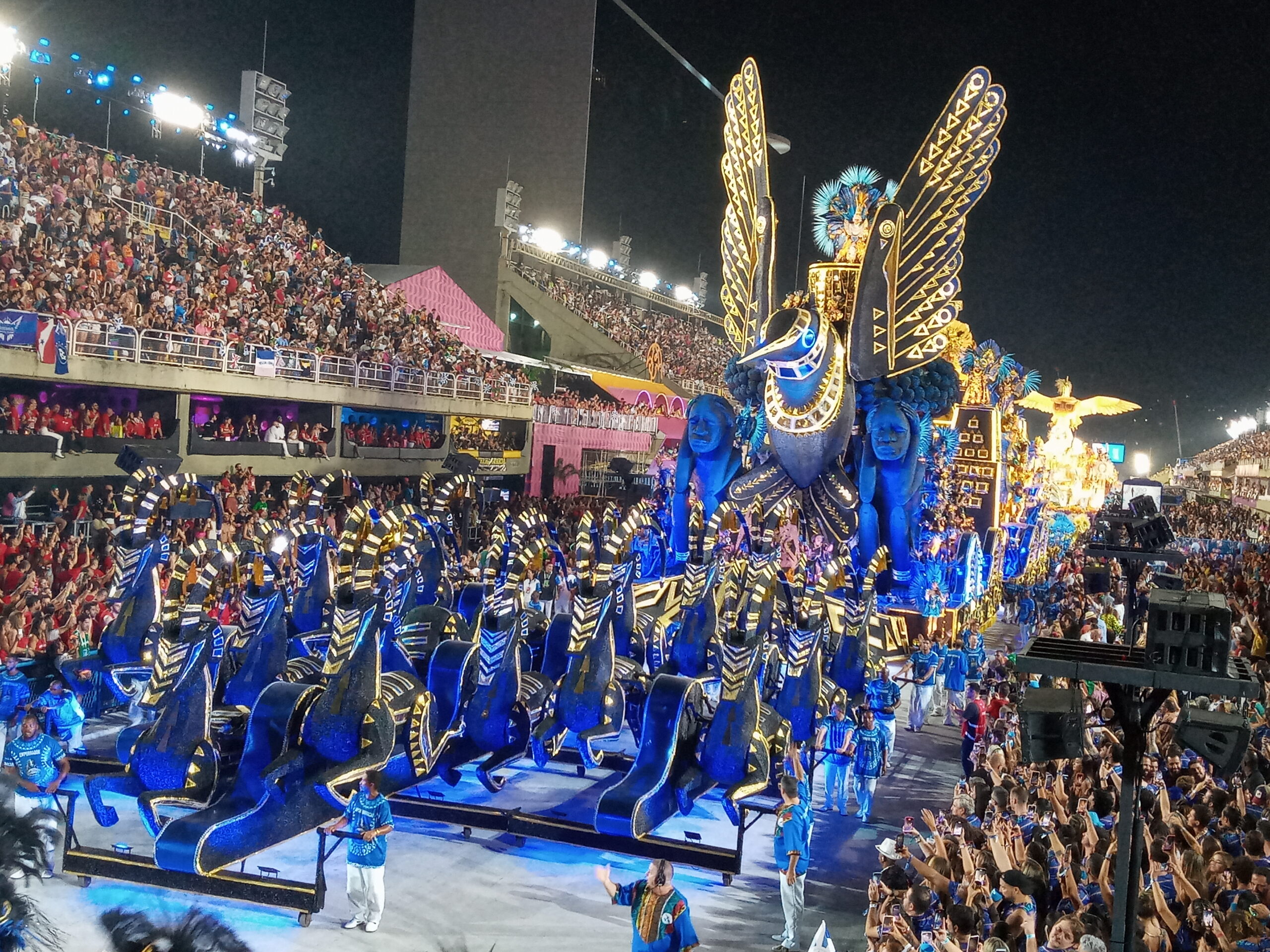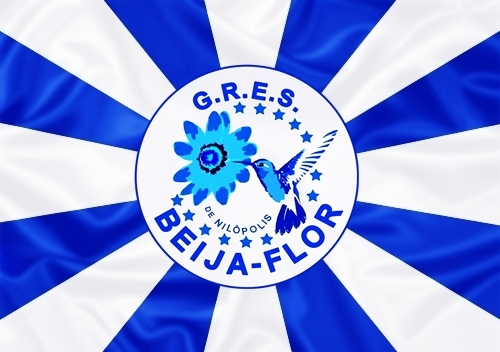- Your cart is empty
- Continue Shopping
Joy of the South Zone






Plot 2022
- Carnivalesque: Marco Antonio Falleiros
- Carnival Director: Leandro Germano
- Director of Harmony: Greg Tavares
- Interpreter: Igor Vianna
- Drum Master: Master Claudinho Tuiuti
- Drum Queen: Anny Santos
- Master of Ceremonies: Diego Machado
- Flag Bearer: Alessandra Chagas
- Front Committee: Leandro Azevedo
- 2022 Parade
- Parade position: 2nd school to parade on Friday (03/01/2022) / 22:45 – 22:55
Synopsis – SUMMARY
“When I entered this house, I praised Mary
Holy name of Jesus, I praise the light of day…”
I was still a little boy the first time my parents took me to an Umbanda temple. I had an infinitely pure soul, but I already knew that many people didn't understand that religion. It's not that I knew exactly what would happen as a child, but my curiosity about what I would find led me to that place.
When I entered that sacred space, the sound of drums and the smell of herbs burning in the small brazier caught my attention. There were people in white robes and some candles lit on the large illuminated altar. The clapping echoed steadily along with the sound of a small bell that seemed to ring a call from afar.
Near that altar there was a man and a woman sitting, each on their own old stump. He – with his old straw hat on his head – had his body bent over supported by a wooden cane and a pipe that gave off white smoke. She – with a white scarf covering her hair – was drinking a mouthful of coffee served in a gourd.
“The smoke from the pipe, smoked conga
And the rosary of Mary, brightened congá!
Oh, it's clear! Oh, it's clear!
It’s clear, your conga, it’s clear!”
With his speech somewhat jumbled, different from anyone else there, that gentleman called me:
– “Come closer, my son! An old man has a story to tell. That's what you came to find, right?”
I felt something different, I didn't know if it was fear or insecurity in participating in that moment. There was no way to refuse. Soon, I repeated the ritual that everyone did when approaching. I sat on a bench in front of him and said:
– “Bless you!”
Then he kindly answered me:
– “God bless you, son! I am Father Benedito who came from Aruanda. This is Maria Conga, she is always with us. Aruanda, son, is a land of peace, where all the people who work in the field of Umbanda live. They will come to this place to work and help tell the story.”
The humility of those people with their friendly faces brought me great peace of mind. In their life stories, they told of having lived through the cruel time of captivity. Their struggle to resist was intense without forgetting their black brothers. Their unwavering faith was always the foundation that led them to freedom. And Grandpa added:
– “And today we ‘work’ with the help of the 7 lines of Umbanda, that’s where we find strength. They and our other spiritual brothers send the light of God to the world. They light our steps so that ‘you’ are not left helpless.”
“In the time of captivity, when the Lord beat me
I screamed for Our Lady, oh my God!
How the blow hurt…”
People from outside continued to arrive and occupy the empty spaces on the benches. Other workers were arriving to introduce themselves. To the sound of the drums, everyone echoed:
“Caboclo is, I know it is Caboclo is the light of the forest, it is…”
It was then that I could hear countless shouts that sounded like Indians in the woods and ox-drivers in the backlands. My body shivered as that humble man greeted the arrival of other spiritual companions. They all had serious expressions and seemed to not like jokes. Headdresses of colorful feathers and leather hats quickly appeared. Then, the wise man said to me:
– “My ‘son’, Umbanda has mystery. The people who arrived ‘here’ ‘work’ in the forests, in the fields and with the ‘foia’. They smoke, drink, bathe and pray firmly!”
That old black man quickly explained to me that they were the caboclos who had arrived at the terreiro. They brought with them the mysteries of the leaves and seeds. They were healers, mandingueiros, owners of valuable wisdom.
“Jurema herbs heal,
Jurema's herbs heal,
Whoever is a child of Jurema never gets lost in the woods”
The drums continued to resound loudly, and the bodies of those people seemed to fall asleep once more. Soon, one, two, several bursts of laughter could be heard. Larôye! The terreiro vibrated, welcoming the arrival of Tranca Ruas and other entities. It was then that the old black woman introduced them:
– “Our compadres and comadres are sentinels. They are the 'hard-working' people who take care of the gates and the paths. They are the ones who 'work' to 'defend' the terreiro and everyone who is here.”
The woman's simple and honest speech caught my attention. I understood at that moment that Exu and Pomba-Gira are demonized by those who do not know them. These spirits are workers who take care of the paths so that the light of Aruanda and the messengers can reach the earth!
“Hey Laroyê!
Exu swore to Ogum
Who would never betray God
Exu, this house belongs to God, Exu!
Exu does not go back on his word”
After some time of that work, the terreiro seemed to be preparing to welcome other entities. A different aroma hung in the air, it seemed like incense, a climate of magic took over the space. And to that kind counselor, he said:
– “Son! These spirits that have arrived come from far away. They come from the east, a bright star guides them. They know a lot about love and magic.”
Optchá! Up! Everyone cheered, greeting the arrival of the gypsies and Turks. Scarves, tambourines and colorful ribbons adorned the bodies of those who were incorporated. They performed magic with daggers and coins. They played cards, talked about luck through the stars. With flowers and perfumes they spoke about love. The chants greeted:
“Who in this world has never heard of it?
Who in this world has never heard of it?
From a gypsy, who lives on that road,
She has her home under the moonlight…”
Other entities arrived at the terreiro, bringing with them a mischievous air. They looked like passionate bohemians, all with their hats slightly tilted on their heads. The girls resembled women with a unique charm and great refinement, they reminded us of old ladies of the night. Then, grandma said to me:
– 'Son', save the streets! That's where these people who like to play cards and have a lot of passion in their 'work' to help all of you belong. Is it love, 'son'? Scoundrel 'solve' this.”
If the radio patrol arrived here now It would be a great victory, no one could run
Now I want to see Whoever is a rogue cannot run”
The great helper in these works was a saint that I had only seen on church altars. In the syncretic power of Umbanda, Saint Anthony of Batalha interceded for all the requests made. And all those entities also seemed to work in a kind of spiritual rescue, with the presence and strength of God to rescue other spirits that they called “brothers” and who were lost in lower dimensions.
“Saint Anthony of Batalha
Make me a fighter
Run, spin, Santo Antonio
Lock Street and Marabô…”
In this way, my eyes shone as I admired that union of people and entities. It was sublime to see the arrival of messengers from all spiritual planes, each one from his “band”, as they said. Then, I understood that that liturgy was nothing more than the reunion of all the bands! That’s why Umbanda! And the old black man quickly said to me:
– “That’s it! ‘Suncê’ understood my ‘son’. Umbanda is an open heart, Umbanda is charity. Umbanda is helping those in need, in this and other planes”
“It reflected the divine light, with all its splendor,
It is from the kingdom of Oxalá, where there is peace and love.
Light that reflected on the earth, light that reflected on the sea,
Light that came from Aruanda, to illuminate us…”
It was magical to understand how that moment transcended the material, and for more than a century, that religious liturgy had been connecting this tangible world with others that we cannot see. That's when Grandpa revealed to me:
– “Cheers, ‘my son’, to the caboclo of the 7 crossroads! He was the one who allowed us to be here, ‘pajuda’ ‘suncê’ and everyone else.”
In that new teaching I learned about the formation of Umbanda. It was Caboclo das 7 Encruzilhadas who opened the doors of the Tenda Espírita Nossa Senhora da Piedade – through the mediumship of Zélio Fernandino de Moraes – to welcome all the spirits who sought to help living beings and achieve their evolution in other planes. Happy, the grandfather completed:
– “And in this band, ‘son’, there are children like ‘suncê’ who come ‘to work’ too. They make mischief and mess, but, ‘to work’! There are, ‘son’, the people of the great waters of the mermaid mother. Sailors and the undines who come ‘to’ wash away all the impurities of the body and soul.”
“The sea's ripple that is 'rippling'
Son of pemba, go unloading
Remove spells, remove evil spells
Take away envy, take away evil eyes”
So, I no longer had any doubts, that moment of faith showed me good paths to follow. With a purified body and a soul bathed in a radiant light. My hands were already following the palms of those people. It was then that one of my companions on this journey said:
– “My son, the time has come to ‘girá!’ Old man Benedito and old woman Conga never tire of this ‘canzuá’, but God illuminated what had to be done and now lives in your heart. This is Umbanda. Peace and love. A world full of light.”
I no longer wanted to hide my emotions at that moment, and of course, I didn't want to have to say goodbye to my guides that night. So, I took the blessing like so many others did, and they, already singing their farewell, said to me together:
– “God bless you, my son. May you be at peace!”
“The bell of heaven rang,
Oxalá already says it's time!
I'm going, I'm going, I'm going!
Stay with God and Our Lady”
My old people left, promising to return. Those people seemed to be waking up from a deep sleep. Their guides returned to Aruanda. From there they will remain vigilant over all of us until their presence in this world is needed again.
In this sacred moment, I am truly a child who has understood the importance of Umbanda. To see that the Brazil we live in is this, the gathering of all the bands! It is a mixture, it is belief, it is an infinity of faith with room for everyone. Everyone, united!
Now I portray these people of faith, who only want to see their beliefs, their temples and their spiritual mentors respected. They seek to bring social work to the aid of those in need in every corner of this world. I dream of seeing humanity stripped of its prejudices, reaching out to celebrate charity as a communion of faith. May hearts beat, radiating kindness to overcome all the barriers raised against those who do not understand Umbanda. May the children of faith not lose heart in the fight!
Today, I will tell and sing under the protection of the flag embodied in the struggle and sweat of a people who never tire of believing in tolerance and love. Embroidered with the white of the flag of charity and peace of the greatest father.
I share my learning with Alegria da Zona Sul, and humbly, we will together fulfill the sacred mission:
Hello, Umbanda!
“[….] taking to the whole world
The flag of Oxalá!”
School Titles
2012
Runner-up
2010
Champion
2003
Runner-up
2001
Champion
Technical Sheet
- Foundation: July 28, 1992
- Colors: Red and white
- President: Marcus Vinicius de Almeida
- Honorary President: Sabrina Garcia
- Block: R. Frei Caneca, 211-233 – Downtown, Rio de Janeiro – RJ, 20221-000
- Tests:-
- Shed: Porto Binary Way, 250 – Santo Cristo, Rio de Janeiro – RJ, 20220-410
- Website: www.gresalegriadazonasul.com.br
- Press:–
The History of Joy in the South Zone
The school was created on July 28, 1992 through the merger of the plot blocks Alegria de Copacabana and Unidos do Cantagalo. The school adopted the colors blue, green and white and had as its symbol the Walt Disney characters: Zé Carioca and Panchito.
In 1993, in its first year at AESCRJ, Alegria managed to stay in group E, presenting the plot “Sou Mais Carioca”, which portrayed the 100 years of its neighborhood, the 50 years of the character Zé Carioca and the first anniversary of the association.
The following year, already consolidated, Alegria da Zona Sul achieved its first championship, with the theme “In the Dance of Colors: Black is Not a Color, But Black is a Race”, presenting in its parade a summary of the meanings of colors and praising the black race.
In 1995, despite having recently won a title, Alegria did not parade in Group D. The following year, 1996, penalized by the Association, it competed again in Group E, winning the title again, with the theme “Look at what a beautiful, graceful thing”, telling the story and celebrating the centenary of the Ipanema neighborhood.
In 1997, after new disturbances, he barely paraded. His theme was “Capoeira, a Brazilian Ballet”, telling the origins of the fight/dance. Despite the problems, he managed to put on a good performance, which earned him second place and promotion to group C.
In 1998, she obtained seventh place with the plot “Black Women are World Culture”, praising the importance and strength of black women since the beginning of humanity, remaining in the same group.
In 1999, Alegria performed with the theme “Alegria, Seu Signo no Zodíaco” (Joy, Your Zodiac Sign) on Avenida Rio Branco, presenting the signs and placing the school as the sign of euphoria. It came in second-to-last place and was relegated to group D.
In the year 2000, Alegria won and moved up to group C again with the theme “Negro Quem És?”.
In 2001, with the theme “Brazil, a Country of All Races”, showing the ethnic groups that were in Brazil even before the discovery of the Portuguese and the mix that is the Brazilian people, Alegria da Zona Sul is champion on Avenida Rio Branco, qualifying for the parade in group B on Marquês de Sapucaí.
In 2002, it was the second school to parade on Carnival Tuesday, achieving 6th place with the plot “Percy's Golden Dream”, showing the saga of the English colonel Percy Fawcett, who disappeared in the interior of the Brazilian backlands while searching for the entrance to Eldorado.
In 2003, the theme “Party in Quilombo: in the Coronation of a Black King” was presented, in a reveler's dream, what would have been the coronation party of Ganga Zumba, the first king of Palmares, when the mocamos paid homage to the enthroned man with Afro-Brazilian dances, which resulted in their promotion to group A.
In 2004, the group presented the theme “Dorival Caymmi, the Sea and Time on the Sands of Copacabana” on the parade avenue, where it took advantage of the fact that it was the neighborhood that singer and composer Dorival Caymmi chose to live in and celebrate his 90th birthday.

